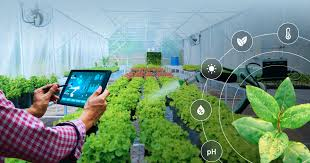Imagine a world where farming decisions are guided not just by intuition but by real-time data. Sounds futuristic? Well, the Internet of Things (IoT) is making this a reality. For smallholder farmers, IoT isn’t just a buzzword; it’s a game changer that’s transforming how they grow crops, manage resources, and sustain their livelihoods. Let’s dive into how IoT is revolutionizing precision farming for smallholders and reshaping agriculture.

IoT in agriculture involves interconnected devices, sensors, and systems that collect and analyze data to help farmers make informed decisions. From soil moisture sensors to GPS-enabled tractors, IoT technology provides actionable insights that enhance productivity and efficiency.
Smallholders, often managing less than two hectares of land, face unique challenges. Limited resources, unpredictable weather, and fluctuating market demands make farming a tough gig. Precision farming, powered by IoT, offers solutions tailored to their needs, helping them:
Sensors collect data on soil moisture, temperature, humidity, and more. For smallholders, affordable and easy-to-install sensors are a gateway to smarter farming.
Data from sensors is transmitted via wireless networks to a central system. Technologies like LoRaWAN and 5G are making this process seamless and cost-effective.
The collected data is analyzed to provide actionable insights. Cloud-based platforms and AI algorithms help smallholders understand trends and make data-driven decisions.
Actuators work in tandem with sensors, automating tasks like irrigation and fertilization based on real-time data.
IoT-enabled irrigation systems monitor soil moisture and weather forecasts to deliver water only when needed. This reduces water waste and ensures crops get just the right amount of hydration.
By analyzing soil nutrient levels, IoT systems guide farmers on when and how much fertilizer to apply. This not only cuts costs but also minimizes environmental impact.
IoT sensors detect early signs of pest infestations or diseases. Farmers receive alerts and can take preventive measures, protecting their crops and reducing chemical use.
Weather stations equipped with IoT sensors provide hyper-local forecasts. Smallholders can plan planting, irrigation, and harvesting activities with greater precision.
For mixed farming systems, IoT devices track livestock health and behavior. Wearable sensors alert farmers to potential health issues, ensuring timely interventions.
IoT enhances traceability by tracking produce from farm to market. Smallholders can access better markets and ensure fair pricing for their products.
Data-driven decisions help smallholders maximize yields and improve the quality of their produce.
IoT optimizes the use of water, fertilizers, and energy, reducing costs and environmental footprint.
Real-time data and predictive analytics enable smallholders to adapt to changing climatic conditions.
By integrating with digital platforms, smallholders can connect with buyers, reducing reliance on middlemen.
IoT tools empower farmers with information, making farming less of a gamble and more of a calculated endeavor.
Despite falling prices, IoT devices can still be expensive for smallholders.
Reliable internet connectivity and power supply remain hurdles in rural areas.
Many smallholders lack the training to use IoT systems effectively.
The collection and storage of data raise questions about ownership and security.
Governments and private players can subsidize IoT devices, making them accessible to smallholders.
Shared IoT infrastructure, such as weather stations, can benefit entire farming communities.
Capacity-building programs can equip smallholders with the skills to use IoT tools effectively.
Clear regulations can address data privacy concerns and encourage adoption.
IoT-powered irrigation systems in Indian villages have reduced water consumption by 30%, boosting crop yields and farmer incomes.
African cooperatives are using IoT weather stations to predict rainfall and plan planting seasons, resulting in higher productivity.
IoT-enabled pest monitoring systems have helped South American farmers cut pesticide use by 40%, promoting sustainable practices.
The IoT landscape is evolving rapidly, with advancements in AI, machine learning, and blockchain. For smallholders, these technologies promise even greater benefits, from predictive analytics to automated machinery. The integration of IoT with renewable energy solutions could further reduce costs and environmental impact.
IoT is not just a tool; it’s a revolution in precision farming. For smallholders, it’s the key to overcoming traditional challenges and unlocking new opportunities. By embracing IoT, smallholders can transform their farms into hubs of innovation and sustainability. The future of agriculture is here, and it’s connected, intelligent, and inclusive.
IoT in precision farming involves using connected devices and sensors to collect data, analyze it, and make informed farming decisions.
IoT helps smallholders optimize resources, increase yields, reduce costs, and improve resilience to climate change.
Popular IoT devices include soil moisture sensors, weather stations, GPS trackers, and automated irrigation systems.
While initial costs can be high, subsidies, shared infrastructure, and affordable technologies are making IoT accessible to smallholders.
Challenges include high costs, lack of infrastructure, limited technical knowledge, and data privacy concerns.
This website uses cookies.